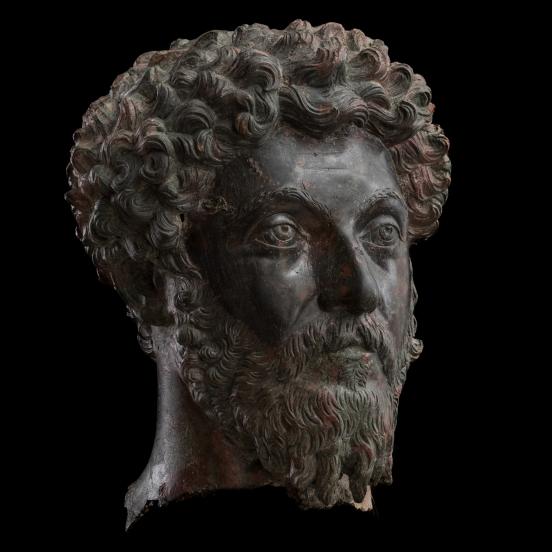Bronze portrait of Marcus Aurelius, Lugio
The portrait of Marcus Aurelius of Lugio (Dunaszekcső) is one of the outstanding artworks found in the territory of Pannonia. The one and a half times larger than life-size bronze head is regarded as a masterpiece, from both an artistic and a technical aspect. It was presumably sculpted in Italia or an Eastern province. The portrait of Marcus Aurelius probably got to the military camp along the Pannonian limes as an accessory of the emperor’s cult. Its place of discovery suggests that it was part of an emperor’s statue originally erected in the central building of the fort. The finish of the edge at the rear part of the neck refers to the head having been joined to a separately made body. Since the back of the bronze head is not worked in detail, it must have been placed in a niche or in front of a wall. Similarly to the famous equestrian statue of Marcus Aurelius in Rome, the Lugio portrait of the philosopher emperor is depicted with a beard and thick curly hair.

